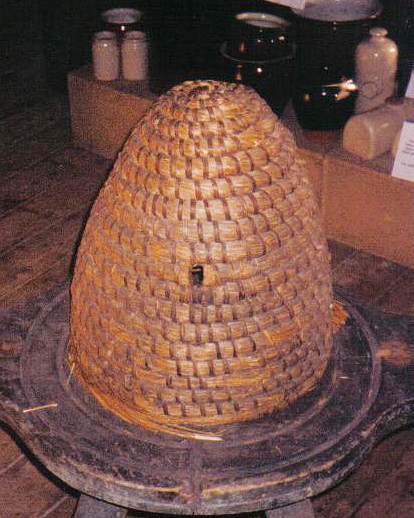
It's appropriate to think of America's first veterans from 261 years ago--the patriots who fought in the American Revolutionary War, also known as The War of Independence (1755-1783).
One of my immigrant ancestors who served in the Revolutionary War was patriot Francis Keatley, born in Donegal County, Ireland. When the Revolutionary War broke out, he left his Virginia farm (now part of West Virginia) and signed up for Capt. Moffet's Company. (As an aside, historical documents show that Mr. Keatley missed a militia meeting and was fined 25 cents!)
Farmers then, as they do now, raised bees to pollinate their fruits and vegetables and to provide honey and other bee products for their families.
Despite popular opinion, honey bees are not native to America. European colonists brought the honey bee to Jamestown colony, Va., near the mouth of the James River, in 1622. Native American Indians, having never seen a honey bee before, called it "the white man's fly." When the Revolutionary War broke out, the "white man's fly" had been here for 133 years.
Bees played a small role in the Revolutionary War. Among the battles was "The Battle of the Bees" that occurred Oct. 3, 1780 at McIntyre's Farm, in Mecklenburg County, North Carolina.
This is what happened, according to historical reports: Loyalists, led by Capt. John Doyle, were traveling down Beattie's Ford Road with 60 wagons. Their mission: to plunder area farms to replenish their supplies. A local boy alerted the McIntyre family that the loyalists were coming. Then the boy informed the patriots, led by Capt. James Thompson.
The patriots hid on the farm and watched as Doyle's men raided the livestock barns. Their bounty included bags of corn and oats that they heaved onto their wagons. During the raid, they accidentally tipped over some of the bee hives—and bees do what bees do when they are threatened: they attacked. During the ensuing commotion and battle, the patriots managed to kill eight loyalists (including Capt. Doyle) and wounded 12. The patriots suffered no fatalities.
Then there's the story about a Philadelphia beekeeper named Charity Crabtree, who warded off the British Redcoats in 1780 by beating her bee skeps with a stick. The angry bees then turned on the soldiers, stinging them relentlessly. Later George Washington reportedly remarked to Beekeeper Crabtree: “Neither you nor your bees shall be forgotten when our country is at peace again. It was the cackling geese that saved Rome, but it was the bees that saved America."
The Crabtree story, titled "How the Bees Saved America," first appeared in the Sunday School Advocate in 1917 and was reprinted in the American Bee Journal. The original story appears on the Los Angeles County Beekeepers website.
Bottom line: Honey bees, in defense of their hive, will attack. That's what bees do....And sometimes, they earn a place in our history books due to their defensive behavior...
Attached Images:
